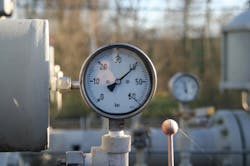Many flow applications, including those in the oil and gas industry, are using differential pressure flow meters such as orifice plate and Venturi primary flow meter elements. Differential pressure flow transmitters are used to convert the differential pressure signal at the primary to an electronic signal. Most flow meter standards focus on the primary flow element but tend to de-emphasize the differential pressure transmitter.
Shortly after starting a new job about 30 years ago, a salesperson paid a visit to tell me about the differential pressure transmitters that he was selling. My immediate response was, "What is the temperature coefficient?" He said, "Thank you for saving me 20 minutes."
Specifications for differential pressure transmitters have improved dramatically over the last 30 years, but the underlying concerns regarding their performance remain the same. The performance of almost all differential pressure transmitters is expressed as a percentage of set span or calibrated span, and not a percentage of the measured differential pressure or the measured flow rate, but other factors can affect the performance of differential pressure flow meters as well.
In particular, differential pressure transmitters are affected by variations in ambient temperature and process pressure. Manufacturers publish specifications that can quantify these effects in applications. These specifications have improved over the past 30 years, but temperature and pressure effects can still significantly affect meter performance and exceed the transmitter accuracy by a factor of three or more in some applications. These effects become more evident when performance is expressed as a percentage of flow rate, especially at low flow rates when the produced differential pressure can be relatively low.
It is still important to consider temperature and pressure effects when calculating overall differential pressure flow meter performance — even though they have been progressively reduced by improved technology and calibration techniques.
David W. Spitzer
David W. Spitzer is a regular contributor to Flow Control magazine and a principal in Spitzer and Boyes LLC offering engineering; seminars; strategic marketing consulting; distribution consulting; and expert witness services for manufacturing and automation companies. Spitzer and Boyes is also the publisher of the Industrial Automation INSIDER. Spitzer has more than 40 years of experience and has written more than 10 books and 300 articles about flow measurement, instrumentation and process control. He may be reached at 845-623-1830 or at spitzerandboyes.com.



